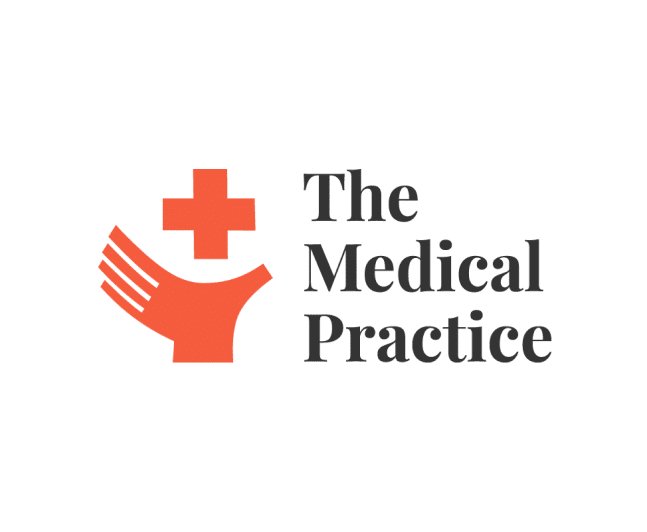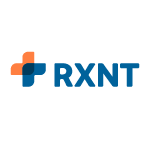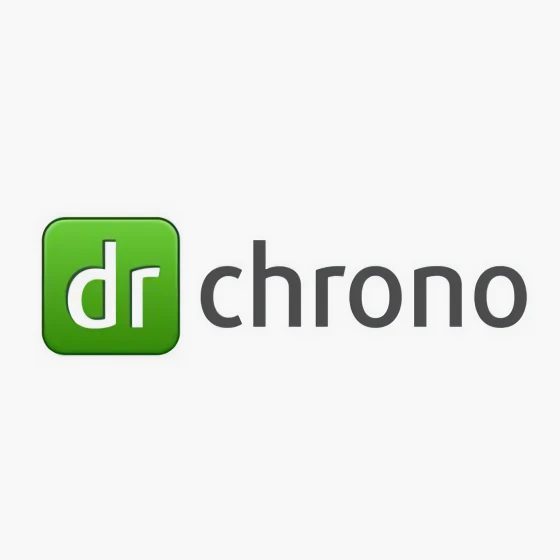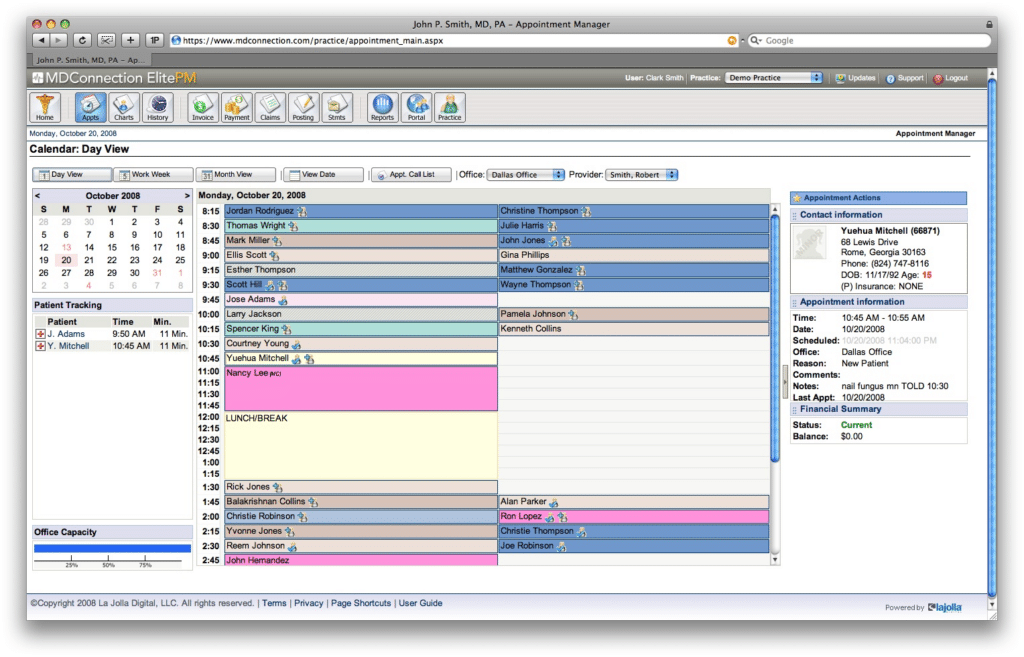10 Best Optometry Software Shortlist
Here's my pick of the 10 best software from the 21 tools reviewed.
Our one-on-one guidance will help you find the perfect fit.
As an optometry practice, managing the day-to-day operations can often feel like a juggling act. From appointment reminders and patient check-ins to invoicing and real-time updates on patient records, every detail matters. That's why tools like EHR software become invaluable. As someone who's deeply familiar with the field, I can say that an all-in-one practice management solution like iMedicWare is a game-changer.
As an optician, the pain points of managing medical software, maintaining patient relationships, and ensuring efficient day-to-day operations are familiar to me. This is where software like iMedicWare, armed with robust RCM and EMR capabilities, comes into play. It's designed to tackle these challenges head-on, streamlining your operations and providing a more seamless patient management experience.
What Is An Optometry Software?
Optometry software is a specialized suite of digital tools designed to streamline and enhance the daily operations of optometry practices and clinics. Optometrists, ophthalmologists, optometry technicians, and administrative staff utilize it for a variety of tasks. The software encompasses functions such as electronic health records (EHR), practice management, appointment scheduling, billing, and even inventory management of optical goods.
This software goes beyond basic scheduling software or a point of sale (POS) system. It's like your iPhone's multitasking prowess put to work for your optometry practice. Offering functionalities like Liquid EHR, ICD coding, and optometry EHR system, it seamlessly ties together all aspects of patient management. This real-time, comprehensive approach enhances patient communication and overall patient experience, making it a cost-effective tool for any practice seeking to increase its profitability.
These tools aid in creating an efficient workflow, fostering patient engagement, ensuring accurate billing, and improving overall patient care within optometric practices. The adoption of this software ultimately aims to elevate the standard of eye care services while making the day-to-day tasks of optometry professionals more manageable.
Best Optometry Software Summary
| Tool | Best For | Trial Info | Price | ||
|---|---|---|---|---|---|
| 1 | Best for unified practice management, EHR, and billing solution | Free demo available | From $110/month/provider | Website | |
| 2 | Best for iPad and mobile EHR applications | Free demo available | From $199/user/month (billed annually) | Website | |
| 3 | Best for customizable EHR and telemedicine capabilities | Free demo available | From $280/month | Website | |
| 4 | Best for AI-driven smart billing and scheduling | Not available | Website | ||
| 5 | Best for combining EMR, practice management, and billing | Not available | Pricing upon request | Website | |
| 6 | Best for billing and practice management efficiency | Not available | From $299/user/month | Website | |
| 7 | Best for enhanced security and privacy features | Not available | From $30/user/month | Website | |
| 8 | Best for cloud-based EHR designed specifically for optometry | Not available | From $395/user/month. | Website | |
| 9 | Best for cloud-based patient engagement solutions | Not available | From $15/user/month, (billed annually). | Website | |
| 10 | Best for integrated ophthalmology-specific workflows | Not available | From $500/user/month (billed annually) | Website |
Best Optometry Software Reviews
RXNT is an integrated healthcare software platform that provides a comprehensive solution for practice management, electronic health records (EHR), and billing. It's designed to centralize and simplify these key operational aspects, making it particularly beneficial for clinics and hospitals seeking a unified solution.
Why I Picked RXNT: I chose RXNT due to its comprehensive, all-in-one nature. Many other EHR platforms tend to focus on one aspect, but RXNT incorporates practice management, EHR, and billing into a unified solution. I determined that RXNT is best for those looking for a comprehensive healthcare management solution because it efficiently integrates these critical aspects without compromising on depth or functionality.
Standout Features & Integrations:
Key features of RXNT include appointment scheduling, patient reminders, and an intuitive billing module that simplifies coding and claims management. It also offers a full-featured EHR that makes patient records easy to access and manage. For integrations, RXNT can seamlessly connect with labs, pharmacies, imaging centers, and hospitals, among other healthcare entities.
Pros and cons
Pros:
- User-friendly interface that simplifies complex tasks
- Facilitates efficient communication with other healthcare entities
- Offers a comprehensive, unified solution for practice management, EHR, and billing
Cons:
- Customization options could be more extensive
- Initial setup and learning process can be time-consuming
- May not be suitable for small practices due to the comprehensive nature of the platform
DrChrono is a healthcare EHR platform that is highly acclaimed for its mobile applications, especially for iPad users. Its ability to streamline EHR tasks across different devices while offering a robust feature set makes it an exceptional tool for those seeking mobility in their healthcare operations.
Why I Picked DrChrono: The reason I selected DrChrono for this list is its focus on mobility, specifically with iPad and other mobile devices. In comparison to other EHR platforms, DrChrono stands out with its well-designed mobile applications that don't compromise on functionality or ease of use. I judged DrChrono to be the 'Best for' iPad and mobile EHR applications due to its seamless performance on these devices.
Standout Features & Integrations:
DrChrono has robust features including appointment scheduling, billing, and patient reminders. Its unique mobile EHR feature enables healthcare professionals to access patient data, schedule appointments, and manage billing right from their iPad or other mobile devices. DrChrono integrates effectively with several lab reporting systems, billing solutions, and other healthcare software.
Pros and cons
Pros:
- Effective integrations with other healthcare systems
- Extensive feature set for managing healthcare operations
- Exceptional mobile EHR functionality
Cons:
- May require high-speed internet for seamless mobile operations
- Learning curve for non-tech savvy users due to advanced features
- May be more expensive than other EHR platforms
PrognoCIS is a versatile electronic health record (EHR) system that blends customizability with advanced telemedicine features. Its focus on adaptability and remote healthcare delivery aligns it strongly with modern healthcare demands, making it a great fit for practices prioritizing customizable EHR and telemedicine capabilities.
Why I Picked PrognoCIS: I chose PrognoCIS for its dual strength in customization and telemedicine - two factors increasingly important in today's healthcare landscape. The tool stands out in its ability to be tailored to the unique needs of a practice, while also offering a solid platform for remote healthcare delivery. Therefore, PrognoCIS is an ideal pick for practices seeking to personalize their EHR environment and enhance their telemedicine capabilities.
Standout Features & Integrations:
PrognoCIS is notable for its highly customizable EHR and built-in telemedicine capabilities. These features allow it to meet the unique needs of a practice and adapt to changing healthcare delivery models. The tool also integrates well with various lab systems, e-prescribing platforms, and billing software, enabling a streamlined workflow and comprehensive patient care.
Pros and cons
Pros:
- Numerous integrations
- Built-in telemedicine capabilities
- Highly customizable EHR
Cons:
- Customer service might be improved
- Higher starting price compared to some competitors
- May require some technical know-how to customize
Compulink is a technology suite that specializes in AI-driven smart billing and scheduling for healthcare practices. Its platform is equipped with comprehensive tools for practice management, electronic health records, and patient engagement. Given its robust AI-driven features, Compulink shines in its ability to automate and optimize scheduling and billing processes.
Why I Picked Compulink: I chose Compulink for its impressive artificial intelligence capabilities, which significantly simplify billing and scheduling tasks. It distinguishes itself with its AI-driven features that make operations more efficient, saving healthcare providers valuable time. For practices that are seeking to streamline and automate these crucial tasks, Compulink is an ideal choice.
Standout Features & Integrations:
Noteworthy features of Compulink include AI-driven smart billing and scheduling, integrated EHR, and patient engagement tools. These features facilitate automated appointment scheduling and efficient handling of billing operations. Compulink integrates seamlessly with various lab systems, billing platforms, and e-prescribing tools, providing a connected ecosystem for healthcare delivery.
Pros and cons
Pros:
- Seamless integrations with other platforms
- Integrated EHR and patient engagement tools
- AI-driven features for smart billing and scheduling
Cons:
- Some users have expressed a need for enhanced customer support
- Users might experience a learning curve with the AI-driven features
- May be pricey for smaller practices
ChartLogic is a healthcare technology suite that combines Electronic Medical Records (EMR), practice management, and billing services. The tool streamlines the complexities of managing a healthcare practice by integrating these critical areas into one platform. Given its comprehensive functionality, ChartLogic is particularly suited for practices seeking a unified solution for EMR, practice management, and billing.
Why I Picked ChartLogic: In choosing ChartLogic, I appreciated how it integrates EMR, practice management, and billing in one platform, providing a unified solution for healthcare providers. Its consolidation of these key areas makes it stand out, offering a more efficient and streamlined approach to practice management. ChartLogic is best suited for those practices looking to centralize their management and billing processes.
Standout Features & Integrations:
ChartLogic shines with features that include a comprehensive EMR system, efficient practice management tools, and a robust billing service. These features, working in unison, offer a cohesive experience for healthcare providers. Notably, ChartLogic integrates well with numerous third-party applications such as lab systems, imaging centers, and hospitals, ensuring that practitioners can maintain continuity of care.
Pros and cons
Pros:
- Seamless integrations with third-party applications
- Streamlined workflows due to unified platform
- Comprehensive integration of EMR, practice management, and billing
Cons:
- The interface could benefit from being more intuitive
- Some users have reported occasional system lags
- May require training to fully utilize all features
MDConnection is a robust medical practice management software that offers a comprehensive suite of features designed to streamline administrative tasks. Its impressive capabilities in billing and practice management efficiency make it a worthy contender for practices looking to optimize their operations.
Why I Picked MDConnection: I selected MDConnection because it addresses the often overlooked, yet crucial aspect of medical practice - efficient billing and management. Compared to other systems, MDConnection stands out with its strong emphasis on these areas. Given its strength in facilitating streamlined billing and practice management, it's an optimal choice for practices prioritizing operational efficiency.
Standout Features & Integrations:
MDConnection is distinguished by its feature-rich environment. Notable features include appointment scheduling, insurance eligibility verification, and a well-structured billing system. It also offers a patient portal to enhance patient-practice communication. The software integrates seamlessly with several EHR systems, allowing for a more complete, interconnected healthcare delivery environment.
Pros and cons
Pros:
- Robust practice management features
- Integration with various EHR systems
- Efficient billing system
Cons:
- Limited customization options
- Interface might require a learning curve
- Cost might be high for smaller practices
iTrust is a cybersecurity company providing robust security and privacy solutions to protect healthcare data. The tool emphasizes comprehensive privacy features, making it an excellent choice for healthcare practices concerned with patient data security. Considering the sensitivity of health data, itrust stands out for its enhanced security and privacy focus.
Why I Picked itrust: iTrust emerged as my choice due to its priority on high-end security features. Amid a rising number of cyber threats to healthcare data, itrust stands out with its innovative and robust security measures. Therefore, I am confident in stating that itrust is 'best for' healthcare practices that require enhanced security and privacy features.
Standout Features & Integrations:
iTrust offers multiple high-grade security features including data encryption, intrusion detection, and two-factor authentication. These features are essential for safeguarding patient data and maintaining HIPAA compliance. itrust also integrates effectively with numerous health record systems and other healthcare applications, providing added protection across platforms.
Pros and cons
Pros:
- Essential for HIPAA compliance
- Effectively integrates with various healthcare applications
- Emphasizes robust security and privacy features
Cons:
- Might be overkill for smaller practices with limited data security needs
- Steep learning curve for those unfamiliar with cybersecurity
- Higher starting price than some other EHR tools
RevolutionEHR is a cloud-based Electronic Health Record (EHR) solution designed with the unique needs of optometrists in mind. The platform offers a suite of tools that are customized to enhance the management of optometric practices and patient care. RevolutionEHR's specialized focus on optometry makes it an ideal tool for this sector.
Why I Picked RevolutionEHR: I chose RevolutionEHR for its specific focus on optometry. Compared to other EHR solutions, its design and features cater directly to the requirements of optometrists, setting it apart. Therefore, I believe that RevolutionEHR is 'best for' optometric practices as it addresses their unique needs effectively.
Standout Features & Integrations:
Key features of RevolutionEHR include patient scheduling, inventory management, billing, and of course, detailed optometry-specific patient records. These tools make it easier for optometrists to manage their practices efficiently. In terms of integrations, RevolutionEHR syncs seamlessly with practice management systems, diagnostic equipment, and even optical labs, facilitating smoother workflows.
Pros and cons
Pros:
- Offers a comprehensive suite of tools including scheduling, billing, and patient records
- Integrates with other practice management systems and diagnostic equipment
- Tailored specifically for optometry, catering to unique needs
Cons:
- The user interface could be more intuitive
- Some users have reported the need for frequent updates
- May be considered pricey for smaller practices
CharmHealth is a cloud-based platform that offers comprehensive patient engagement solutions to streamline healthcare delivery. It effectively combines electronic health records (EHR), practice management, and patient portal functionalities, making it particularly suited to healthcare providers seeking advanced patient engagement tools.
Why I Picked CharmHealth: I picked CharmHealth because of its robust cloud-based patient engagement solutions. What sets it apart from other platforms is the way it integrates multiple aspects of patient care and practice management into a single platform. Given its strong patient engagement capabilities, CharmHealth is the perfect choice for practices that aim to improve patient involvement in their healthcare journey.
Standout Features & Integrations:
Key features of CharmHealth include an integrated EHR, telehealth capabilities, online appointment scheduling, and secure patient messaging. The patient portal provides an interactive platform for patients to manage their health data, book appointments, and communicate with their healthcare providers. CharmHealth can also be integrated with various lab systems, billing platforms, and e-prescribing tools, creating an interconnected healthcare delivery system.
Pros and cons
Pros:
- Cloud-based platform for ease of access
- Integrated EHR and practice management tools
- Comprehensive patient engagement solutions
Cons:
- Some users have reported a need for improved customer support
- May have a steep learning curve for non-technical users
- Pricing might be high for smaller practices
ModMed, also known as Modernizing Medicine, is an electronic health record (EHR) system designed to cater specifically to various medical specialties, including ophthalmology. It is characterized by its ability to provide integrated, ophthalmology-specific workflows, making it an excellent tool for eye care professionals.
Why I Picked ModMed: I selected ModMed due to its focus on specialty-specific functionalities, which is a unique approach compared to many EHR systems. Its ability to offer integrated, ophthalmology-specific workflows truly differentiates it in the market. This particular feature positions ModMed as the go-to tool for ophthalmology professionals seeking an EHR system built with their practice in mind.
Standout Features & Integrations:
ModMed's standout features include specialty-specific EHR, practice management, and a patient portal, among others. The tool's EHR specifically designed for ophthalmology optimizes workflow and improves patient care. Regarding integrations, ModMed supports a range of services such as revenue cycle management, telehealth services, and analytical tools to give a well-rounded view of practice operations.
Pros and cons
Pros:
- Robust analytical tools
- Range of integrated services
- Specialty-specific EHR
Cons:
- May have a steeper learning curve due to specialized features
- Requires annual billing
- High entry price
Other Optometry Software
Below is a list of additional legal optometry software that we shortlisted, but did not make it to the top 10. Definitely worth checking them out.
- WINK
For managing optical inventory and sales
- EpicCare
For comprehensive patient data management
- Tebra
Good for cloud-based EHR with an integrated billing solution
- Practice Fusion
Good for an affordable web-based EHR system
- AdvancedMD
Good for specialty-specific EHR functionality for ophthalmology
- Sevocity
Good for customizable EHR solutions for various specialties
- Eyefinity EHR
Good for EHR specifically designed for eye care professionals
- MedicsCloud
Good for cloud-based, comprehensive EHR solution
- AllegianceMD
Good for AI-driven EHR and practice management
- MaximEyes
Good for EHR with advanced inventory management for optometrists
- Practice EHR
Good for streamlined patient appointment scheduling
Other Healthcare Software Reviews
Selection Criteria For Optometry Software
In the pursuit of finding the best optometry software, my journey involved testing and researching multiple platforms. After trying out more than 15 tools, I honed in on specific functionalities that make some software superior in catering to optometry practice needs. These became the cornerstones of my evaluation process and here's what I found.
Core Functionality
In selecting the best optometry software, the software should enable:
- Effective patient data management: The tool should handle patient's demographic information, medical history, and treatment details with efficiency and ease.
- Seamless appointment scheduling: The software needs to streamline the process of scheduling, modifying, and canceling patient appointments.
- Efficient billing and insurance processing: The tool should facilitate easy and quick processing of patient billing and insurance claims.
- Optometry-specific features: The tool needs to have features that cater specifically to optometry practices like optical inventory management, ocular examination details recording, etc.
Key Features
Key features that particularly matter for this search intent include:
- Electronic health records (EHR): A robust EHR system ensures accurate record-keeping and helps in making informed treatment decisions.
- Practice management: This enables streamlined operations, from patient registration to appointment scheduling and billing.
- Optical inventory management: This feature facilitates efficient tracking and management of eyeglasses and contact lenses stock.
- Integrated billing: This feature aids in streamlining the billing process, making it quick and error-free.
- Customizable templates: These help in creating optometry-specific data entry fields for better data organization.
Usability
When considering usability, the design, ease of onboarding, interface, and customer support are critical. Here's what this type of product should specifically have:
- Intuitive user interface: The tool should offer a clean, easy-to-navigate interface with clearly labeled functions, reducing the learning curve for staff.
- Quick onboarding: The software should provide comprehensive guides and onboarding support to facilitate a quick and smooth transition.
- Responsive customer support: Having reliable customer support is crucial for addressing any technical glitches or questions that might arise during usage.
- Mobile compatibility: The tool should offer mobile application or mobile-optimized interface to enable access from anywhere.
- Role-based access: It's essential for an optometry software to have role-based access ensuring relevant team members have appropriate access levels to patient data and various functions.
People Also Ask
What are the benefits of using optometry software?
Using optometry software offers numerous benefits. It streamlines your practice operations by automating appointment scheduling, patient registration, and billing processes. It provides an efficient system to manage Electronic Health Records (EHR), ensuring secure and organized storage of patient data. Optometry-specific features such as optical inventory management aid in keeping track of eyeglasses and contact lenses stock. Integrated billing features facilitate smooth billing and insurance claim processing. Finally, customizable templates allow for creating optometry-specific data entry fields for better data organization.
How much do optometry software tools usually cost?
Pricing for optometry software tools varies widely, depending largely on the complexity of the software and the size of your practice. Some basic software tools start as low as $50/user/month, while more comprehensive solutions can cost several hundred dollars per user per month.
What are the typical pricing models for optometry software?
Most optometry software providers follow a subscription-based pricing model, often charging on a per-user or per-provider basis. You might encounter monthly, quarterly, or annual subscriptions, with some providers offering discounts for longer term commitments. There may also be one-time setup fees for certain services.
What is the typical range of pricing for optometry software?
The pricing of optometry software can start from $50/user/month and can go up to $500/user/month, depending on the functionality and features offered. Keep in mind that prices may also increase with additional modules or services.
Which are the cheapest and most expensive optometry software?
As of my latest research, the most affordable optometry software is Practice EHR, starting from $59/user/month. On the other end of the spectrum, AdvancedMD is one of the more expensive options, with prices starting from $429/user/month.
Are there any free optometry software options?
Completely free optometry software options are rare, as these tools generally offer a comprehensive suite of features requiring significant development and maintenance. However, many providers do offer free trials or freemium versions of their software, allowing you to test out the basic features before committing to a paid plan. It’s always worthwhile to check with individual providers about any free or discounted options they may offer.
Summary
To summarize, when choosing the best optometry software, it's crucial to consider your specific needs and how a software aligns with them. Look for a tool that not only provides core functionalities such as appointment scheduling, EHR management, and billing capabilities, but also offers optometry-specific features like optical inventory management and customizable templates for better data organization.
Here are three key takeaways from this buyer's guide:
- Understand Your Needs: Recognize what your optometry practice needs the most. Are you looking for a robust EHR system, an efficient scheduling tool, or a platform that can handle billing and insurance claims seamlessly? Identifying your priorities will help narrow down the choices.
- Prioritize Usability: User experience plays a significant role in how effectively a team can use the software. Look for intuitive design, ease of onboarding, efficient customer support, and functionalities that simplify rather than complicate your workflows.
- Consider the Pricing: Pricing varies significantly across different optometry software. Align your budget with your needs. While cost-effectiveness is crucial, do not compromise on essential features for a lower price. Remember, an investment in a comprehensive solution can increase your practice's overall efficiency and productivity.
What Do You Think?
We hope that this guide has provided you with valuable insights into the best optometry software currently available on the market. However, we also acknowledge that there are many other great tools out there. If you think we've missed a worthy contender, we invite you to share your recommendations.
We're always eager to learn about new and effective solutions that could help optometrists enhance their practice. So please, feel free to suggest any tool that you believe deserves a spot on this list!
























